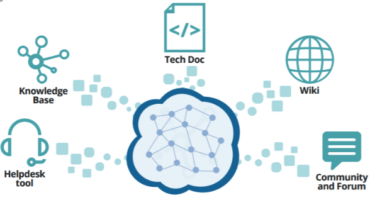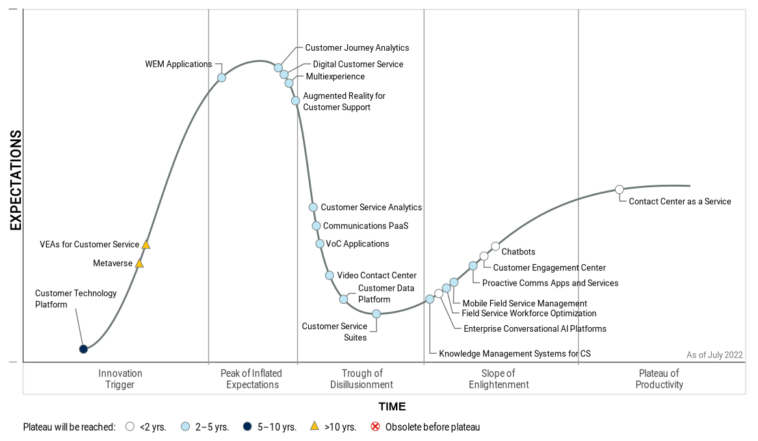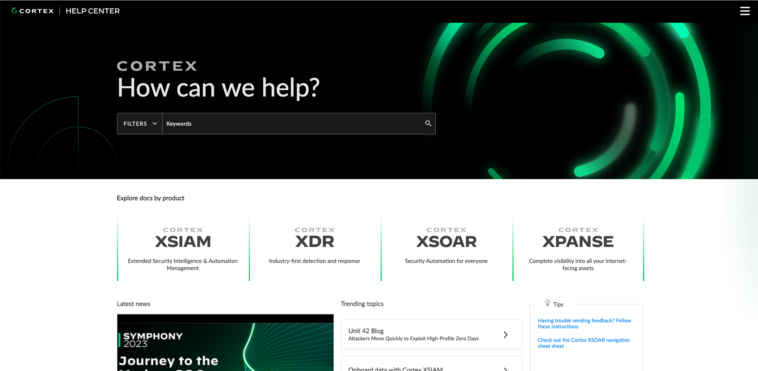The importance of customer service and support can’t be overstated. In recent years, customer service has undergone considerable changes and gained profound significance in comparison to other areas of business. 73% of business leaders have even reported a direct link between their customer service and business performance.
In the coming years, support agents will therefore need the right knowledge tools to ensure swift resolution, user satisfaction and business efficiency.
So let’s see what’s going to keep us on our toes over the next 12 months. Here are 4 customer service and support trends – and one bonus trend that is also worth keeping an eye on!
1. There will be greater emphasis on self-service options
According to Gartner more than 40% of customer service and support leaders say call volumes have increased since the pandemic. Clearly, agents cannot cope with every query personally.
But to be fair, customers don’t always want to reach out for support. They’d rather just find the answer on their own and get on with their day.
Statistics speak for themselves. 90% of consumers expect a brand to offer a self-service support portal. Unfortunately, less than one-third of companies offer self-service options such as a knowledge base or a portal.
Self-service empower customers. It gives them the ability to solve problems on their own and save companies valuable resources and time. It’s also a great tool in the pursuit of case deflection from your contact center and customer support.
An effective self-service portal should always be accessible to customers, provide smooth and efficient responses to queries, and maintain a consistent experience for all users.
Get Started: Do you have an existing portal or knowledge base? Can customers easily find answers on their own? How many support tickets could have been answered through your existing documentation? Conduct an audit to know what’s working and what remains to be done. Explore how a Content Delivery Platform could help your customers self-serve.
2. The rise of omnichannel customer service
Customers no longer use a single channel to interact with your business. Nowadays, 40% of consumers report using three or more channels to communicate with customer service representatives.
Omnichannel customer service provides customers with a consistent support experience across all the touch points they use to engage with your product or company. Therefore, companies providing support through multiple channels give customers the option to use the channel that best suits their preferences and their needs.
Technologies are already gaining ground to support this rising trend. Content Delivery Platforms serve unified knowledge in any channel, including existing helpdesk tools, documentation portals, and even community softwares such as Salesforce Service Cloud or Community Cloud.

Get Started: Ask yourself whether you can easily publish your content in multiple channels without reformatting that content for each channel. Hear how this company unified its content experience for all customers. See how they created an omnichannel experience in which content is easily published to both Salesforce and their documentation portal.
3. Businesses will invest more in AI-powered support systems and chatbots
According to IDC research, worldwide spending by governments and businesses on AI technology will top $500 billion in 2023. With the rapid adoption of these technologies, AI-powered support systems and chatbots have the potential to take center stage in the coming year.
70% of customers are using self-service channels at some point in their resolution journey. Consequently, companies need to offer automated assistance for frequently asked questions, enabling human customer service agents to tackle more complex issues. In fact, automated systems provide quick responses 24/7 and handle large volumes of queries at the same time.
As stated in Gartner’s Hype Cycle for Customer Service & Support Technologies, companies looking for technologies that can have a near-term high impact should focus their attention on chatbots and automated support systems.

Get Started: Make sure you have the right tools in place to handle the complexity of feeding new delivery channels with textual content. Check how these AI-powered technologies work for your business. Read more about it in the following white paper “Tech Content Delivery: The Challenge of New Channels”.
4. Data-driven content and customer feedback
Recently, companies have focused their effort on analyzing customer insights and feedback to develop a more customer-centric business. This year’s trend will pay attention to the product content performance with next-generation content analytics.
By analyzing content performance and customer feedback, companies will identify, in real-time, areas where they are excelling, and where they need to improve. “When we see that people spend a lot of time on a particular topic, it raises a flag. It might mean that the documentation needs attention because it’s hard to use, or that the product itself needs attention,” shared Lonnye Yancey-Smith, Executive Manager at Hexagon Asset Lifecycle Intelligence.
Businesses should properly consider this data to make their customer support more efficient and avoid customer frustration.
Get Started: The variety of data tools is growing. In an omnichannel environment, you need to find a technology that measures not only key metrics such as sessions, users, pages, flow or duration but also metrics that evaluates specific user behaviors and ensure continuous improvement of your content.
Bonus: Personalized and contextualized customer experiences
With companies like Google or Amazon, customers expect personalized experiences. According to McKinsey, 71% of customers expect personalized interactions and 76% get frustrated when they don’t find it.
In a recent webinar held with Fluid Topics, Val Swisher, author of the influential book “The Personalization Paradox: Why Companies Fail (and How To Succeed) at Delivering Personalized Experiences at Scale” said that “a personalized experience is when we can deliver the right content to the right person at the right time on the right device in the language of their choice”.
In 2023, businesses will also have to create contextualized experiences. Fabrice Lacroix, CEO of Fluid Topics, defines a contextualized experience as “giving customers, the right information about the right product, with the right configuration, at the very moment they are seeking it.”
Personalization and contextualization go hand in hand, and they will be more than just bonuses for doing business. Technologies such as Content Delivery Platforms can help you follow this trend. They will boost your content’s impact on your customers and support teams as well as improve satisfaction.
Get Started: You need to give customer teams the right tools so they can proactively offer personalized and contextualized support that gets customers on their way. Make sure to check out what a Content Delivery Platform can do for you. The following webinar gives more insight into these concepts.
Key takeaways of customer service and support trends
Adopting the strategies and trends outlined above can greatly enhance your customer support and make your customer service a key competitive advantage.
For product and technical content professionals, having a customer-centric vision will help provide the best possible experience and support for their users.
Fluid Topics’ Content Delivery Platform serves your customers with the product information they need to successfully solve their issues on their own. You can easily prevent questions from turning into cases, improve case deflection, and accelerate resolution while making the most of your product documentation.
Try it now and discover how to build efficient content experiences for your customers & support agents.





